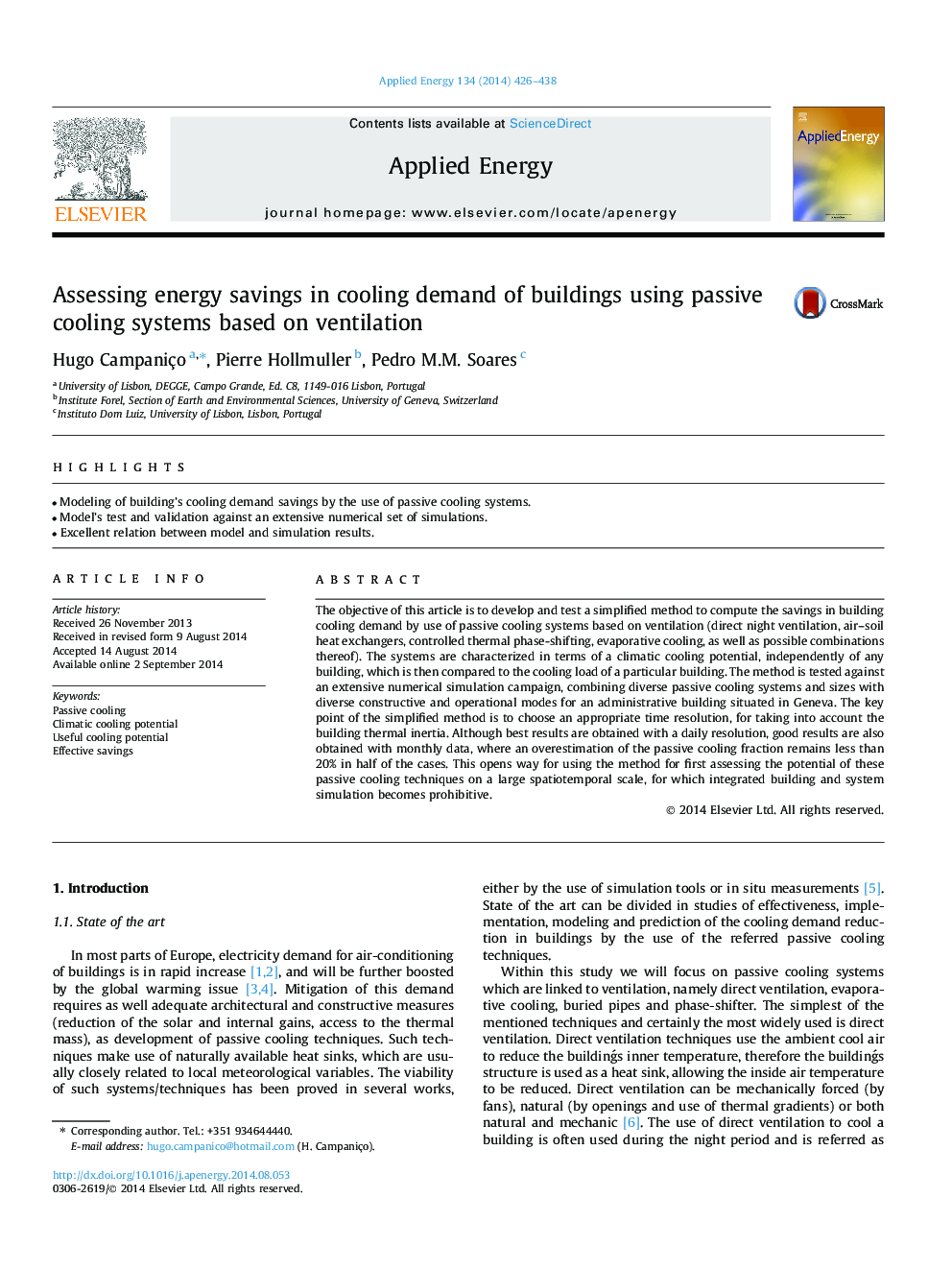| کد مقاله | کد نشریه | سال انتشار | مقاله انگلیسی | نسخه تمام متن |
|---|---|---|---|---|
| 6689683 | 501891 | 2014 | 13 صفحه PDF | دانلود رایگان |
عنوان انگلیسی مقاله ISI
Assessing energy savings in cooling demand of buildings using passive cooling systems based on ventilation
ترجمه فارسی عنوان
ارزیابی صرفه جویی در انرژی در تقاضای خنک سازی ساختمان ها با استفاده از سیستم های خنک کننده منفعل بر اساس تهویه
دانلود مقاله + سفارش ترجمه
دانلود مقاله ISI انگلیسی
رایگان برای ایرانیان
کلمات کلیدی
خنک کننده منفعل، پتانسیل خنک کننده هوا پتانسیل خنک کننده مفید پس انداز موثر،
ترجمه چکیده
هدف از این مقاله، توسعه و آزمایش یک روش ساده برای محاسبه پس انداز در ایجاد تقاضای خنک کننده با استفاده از سیستم های خنک کننده منفعل بر اساس تهویه (تهویه مستقیم شبانه، مبدل های حرارتی هوا، انتقال فاز حرارتی، خنک کننده تبخیری، و همچنین ترکیبات احتمالی آن). سیستم ها از لحاظ بالقوه خنک کننده آب و هوایی مشخص است، مستقل از هر ساختمان، که سپس با بار خنک کننده یک ساختمان خاص مقایسه می شود. این روش در برابر مبارزات شبیه سازی عددی گسترده، ترکیبی از سیستم های مختلف خنک کننده منحصر به فرد و اندازه های مختلف با سازه های مختلف و عملیاتی برای یک ساختمان اداری در ژنو آزمایش شده است. نقطه اصلی روش ساده این است که یک زمان مناسب را انتخاب کنید، برای در نظر گرفتن اینرسی حرارتی ساختمان. با وجودی که بهترین نتایج با تفکیک روزانه به دست می آید، نتایج خوب نیز با داده های ماهانه به دست می آید، در حالی که بیش از حد درصد خنک کننده منفعل در نیمی از موارد کمتر از 20 درصد است. این راه برای استفاده از روش برای اولین بار ارزیابی توان بالقوه این تکنیک های خنک کننده منفعل در مقیاس فضایی طولانی باز می شود که برای ساخت ساختمان یکپارچه و شبیه سازی سیستم بسیار مهیج است.
موضوعات مرتبط
مهندسی و علوم پایه
مهندسی انرژی
مهندسی انرژی و فناوری های برق
چکیده انگلیسی
The objective of this article is to develop and test a simplified method to compute the savings in building cooling demand by use of passive cooling systems based on ventilation (direct night ventilation, air-soil heat exchangers, controlled thermal phase-shifting, evaporative cooling, as well as possible combinations thereof). The systems are characterized in terms of a climatic cooling potential, independently of any building, which is then compared to the cooling load of a particular building. The method is tested against an extensive numerical simulation campaign, combining diverse passive cooling systems and sizes with diverse constructive and operational modes for an administrative building situated in Geneva. The key point of the simplified method is to choose an appropriate time resolution, for taking into account the building thermal inertia. Although best results are obtained with a daily resolution, good results are also obtained with monthly data, where an overestimation of the passive cooling fraction remains less than 20% in half of the cases. This opens way for using the method for first assessing the potential of these passive cooling techniques on a large spatiotemporal scale, for which integrated building and system simulation becomes prohibitive.
ناشر
Database: Elsevier - ScienceDirect (ساینس دایرکت)
Journal: Applied Energy - Volume 134, 1 December 2014, Pages 426-438
Journal: Applied Energy - Volume 134, 1 December 2014, Pages 426-438
نویسندگان
Hugo Campaniço, Pierre Hollmuller, Pedro M.M. Soares,
